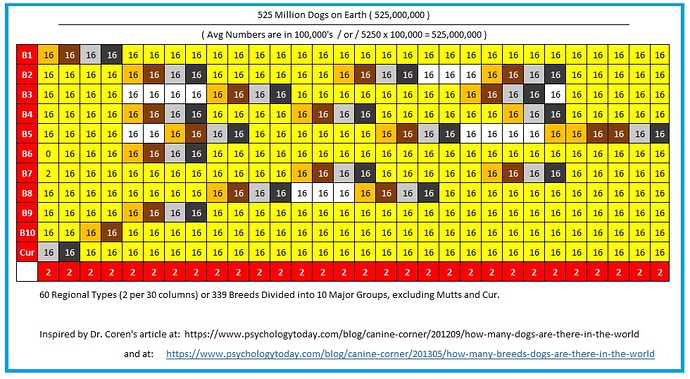I’m not sure your hypothetical relates well to the topic I’m discussing.
For example, the topic of Ring Species frequently deals with populations of animals advancing into territory (or continuing to hold territory) that bends around a natural barrier (say, a mountain, or a bay).
The exchange of genetic material is summarized at the population level, rather than at the ultimate range of a single individual.
I’m sure there is a fancy field of mathematics that would help visualize this. But essentially the exchange of genetic information is between members of a subgroup that are closer to each other than is the distance between neighboring subgroups.
In an extended range that circles around mountain, or a canyon, or body of water, intra-subgroup exchange is high, while inter-subgroup exchange is low. And should an average individual from one of the the two terminal ends of the entire chain of subgroups attempt to mate with an average individual from the other terminal end of the range… mathematically we would expect there to be less reproductive compatibility, simply because the effects of genetic drift become that much more significant than the amount of genetic exchange (which could still be going on at a low level) between the two terminal subgroups.
In view of this description, I think you can see, @Lynn_Munter, that the lone wolf scenario is perfectly fine - - just not applicable to the question at hand.
As to the “exuberant crossbreeding campaigns” that I mention… let me provide a rough image of how I visualize the matter… it is far from complete… but it is the start of a master chart representing approximately 525 million dogs believed to be living on Earth today, divided into 339 Breeds, aggregated into 10 major categories of Breeds (as recognized by the World Canine Organization, and leaving all else as either Mutts or Cur), and 60 Regional Types.
In the picture below, the X Axis is 2 regional types x 30 columns, while the Y Axis has 10 rows for the categories and an 11th row for Mutts/Cur. This visualization may turn out to be a dead end. But what I will hope to show with it is that generations of Breeding programs, overlapping various chunks of breeds and regions, over time, should well have touched every obscure kind of domestic dog one can imagine.
Even though a breeder is trying to restrict the genetic scope of his breed, that is only after the breed is established. To build a breed, sometimes the breeder has to bring in genetic contributors from another chunk of the domesticated dog population.
Then there are the dogs that don’t make the cut. Does he euthanize them? Or does he give them away? Over centuries of time, I’m thinking all this activity is more like a Cuisinart blender at the Mutt-End of the spectrum, with the ultimate result being a very robust reproductive compatibility between the various corners of the dog population - - rather than a pattern of dogs that are not able to breed well with each other (setting aside obvious physical limitations like giant Greyhounds vs. Corgies).
Anecdotally, at the very least, I have never heard of any dog lover or dog breeder talking about how some breeds just can’t produce pups… which would be a “flag” that there are pockets of reproductive incompatibility.
